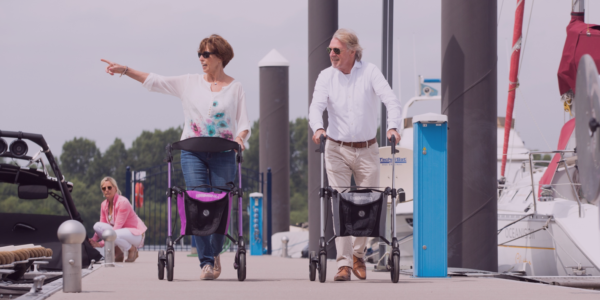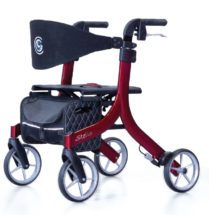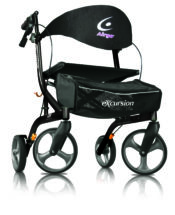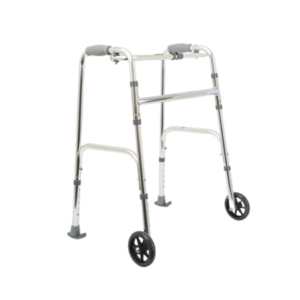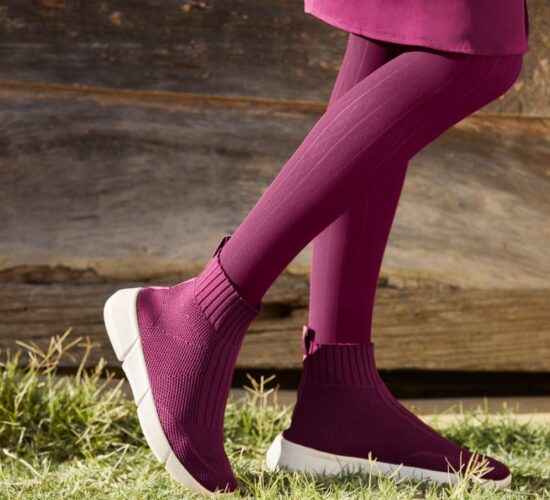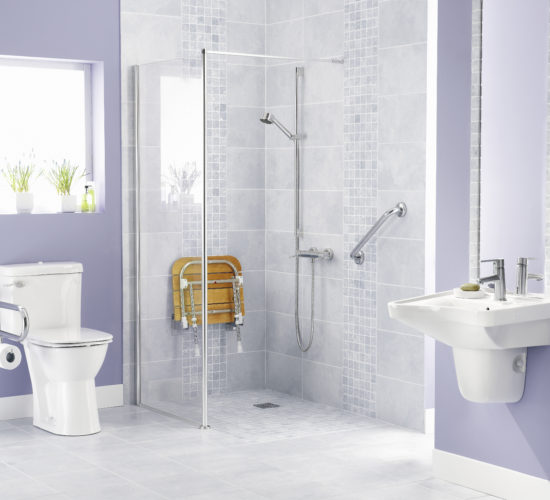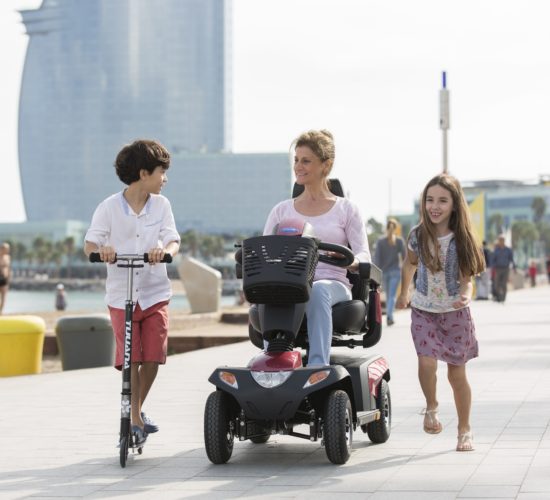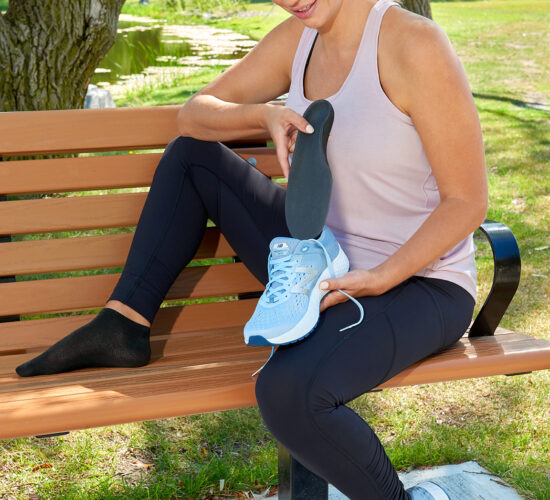The different types of walking aids
To get the most out of your walking aid, it is important to choose the right one based on how you plan to use it. Walking aids come in different models that can be divided into four categories.
Classic walker
Classic walkers are basic devices designed to be lightweight and maneuverable. Their frame is usually made of aluminum. They have four legs with anti-slip feet.
Classic walkers are primarily designed to be used indoors or on smooth, mostly even surfaces. They should be light enough for you to lift as you walk.
Two-wheeled rollator
A two-wheeled rollator is more practical if you often walk outdoors or for longer distances. The two wheels in the front allow you to swivel without having to completely lift the rollator to move it.
Both rear legs have non-slip feet to help keep you nice and balanced in all circumstances. They also help to slow down or brake the rollator when you’re walking to prevent sudden movements that could lead to a fall.
Three-wheeled rollator
Three-wheeled rollators are for people with moderate loss of mobility. They have two wheels on the back and one on the front. They are highly maneuverable but require some skill to be used properly.
Three-wheeled rollators are more practical for flat surfaces, indoors and short trips outdoors. They can be equipped with accessories to make walking more enjoyable: a seat, cane holder, carrying bag, etc.
Four-wheeled rollator
Four-wheeled rollators are ideal for getting around outdoors on more uneven surfaces, including sidewalks, park and forest trails or other rugged surfaces.
These rollators have hand brakes on the handles. Simply squeeze the hand brakes to lock the wheels and stop the rollator. The wheels at the front can swivel to improve manoeuvrability.

